Our Blog - San Sebastián, Spain
Our first stop in Spain was to San Sebastián (also known as Donostia), one of the most famous tourist destinations in Spain and host of events such as an International Film Festival. While they look differently, the names "San Sebastián" in Spanish and "Donostia" in the Basque language mean the same thing ... Saint Sebastian. It is a very OLD location ... remains such as carved stone used as knives to cut animal skin dating from 24,000 to 22,000 BC have been found there.
There are several districts in the city, but we mostly stayed in Parte Vieja (Old Town), which is the traditional core of the city and was surrounded by walls up until 1863. Our hotel was across the river in Gros, which has a beach and Congress Center.
It is also renowned for its Basque cuisine. San Sebastián and its surrounding area is home to a high concentration of restaurants boasting Michelin stars and only lags behind Kyoto, Japan for the most Michelin stars per capita in the world. It is also known for pintxos, which are like tapas, which may be found at the bars of the Old Quarter. You'll see these a bit later :-)
We got into the hotel and parking (which was nearby at the beach/conference center) and headed to the old town, using the Zurriola Bridge (also known as Puente Del Kursaal) to cross the Urumea River. The bridge was built in 1921 and originally stood alongside the Gran Kursaal, which was demolished in 1972 and replaced by the Kursaal Congress Center (also known as the Kursaal cubes). The bridge has fantastic Art Deco lamp posts designed by Víctor Arana, which look like lighthouses.
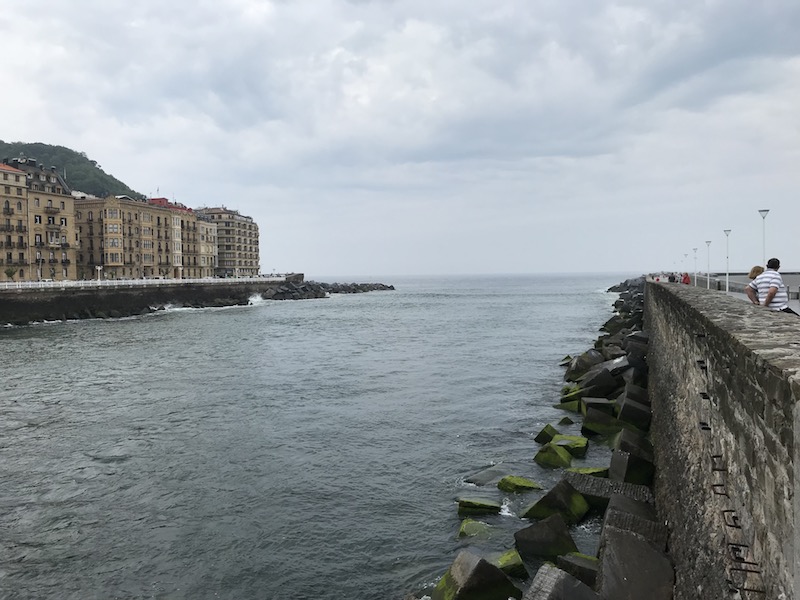
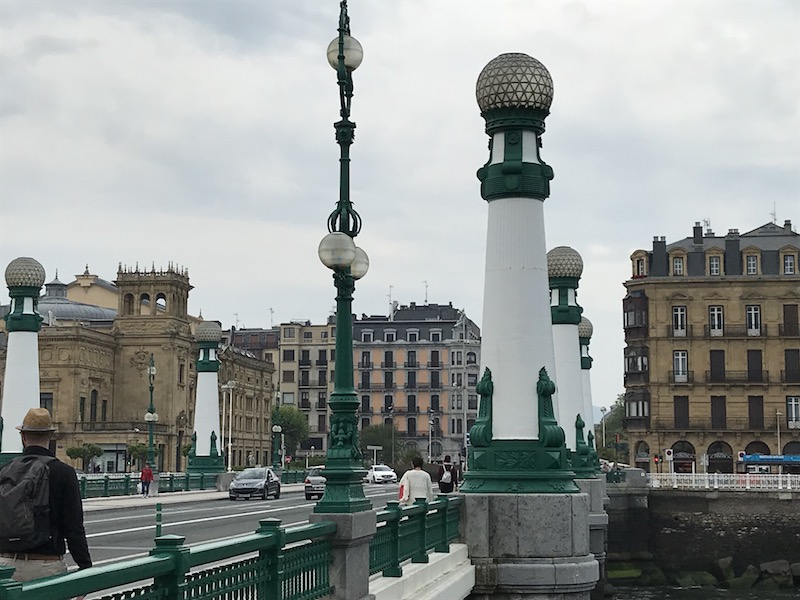
The market of La Bretxa was designed by Antonio Cortázar in 1870 and then expanded by José de Goicoa in 1898. The Pescadería building was added later, behind and separated from the main market building. Unfortunately, as you can see, it has been invaded now by a McDonalds :-(



Originally named Plaza Nueva (New Square), this square was built in 1689 based on a layout designed by a French engineer. The buildings here now, mostly in Neo-Classical style, date to about 1817 when the square was rebuilt after the city was sacked and burnt by Anglo-Portuguese troops in 1813. At this time, the square was used as a bullring and the city council rented out the balconies as "boxes" during bullfighting festivals. You can still see the numbering on these balconies today. It was renamed Constitution Square in 1820.
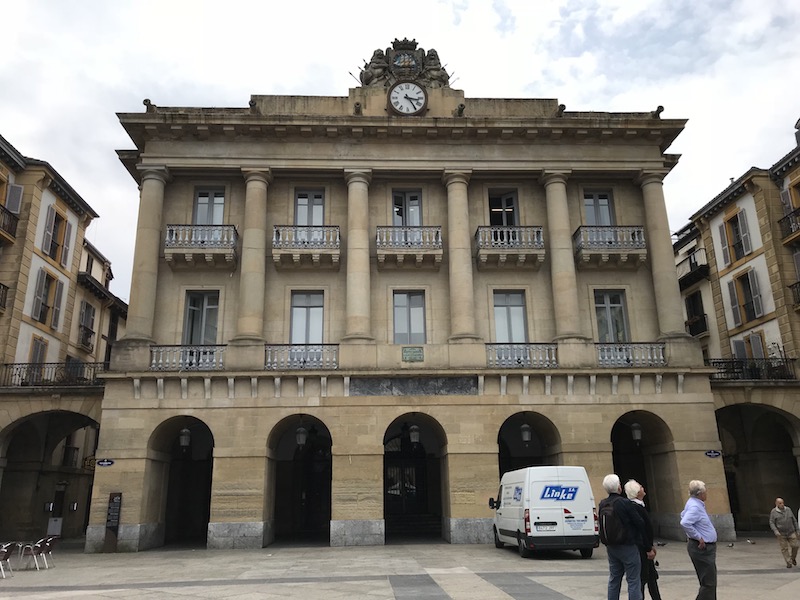
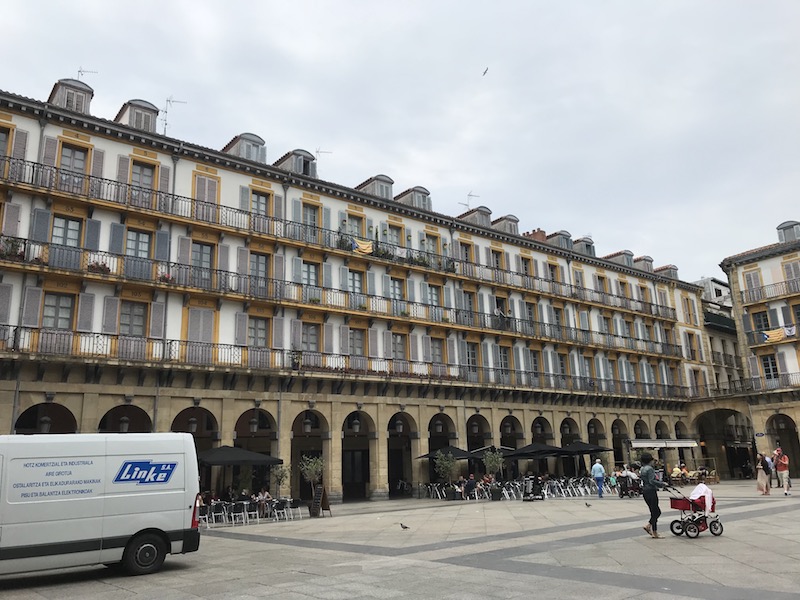
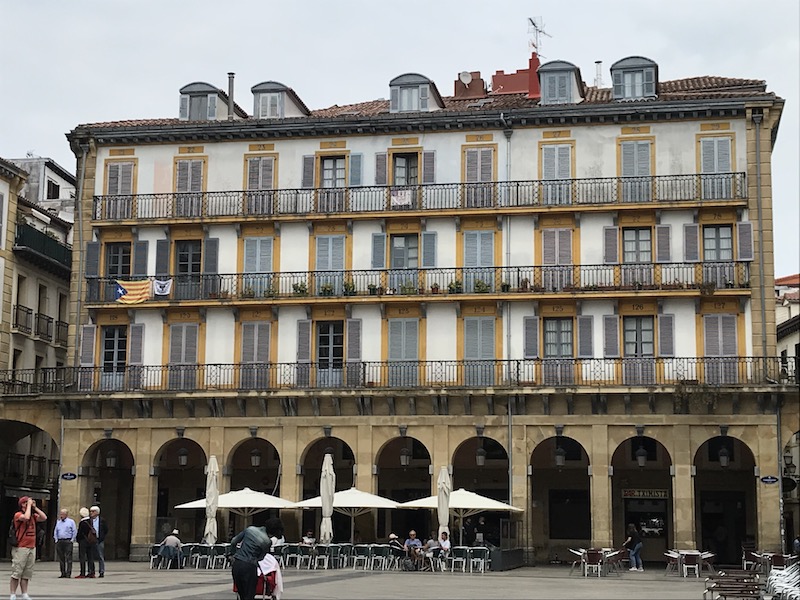
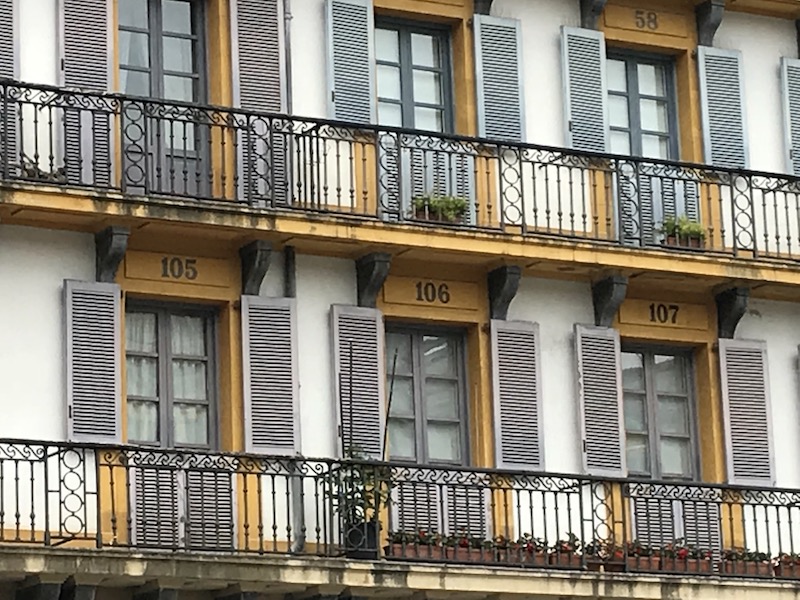
The Basilica of Santa Maria del Coro (Basilica of Saint Mary of the Chorus) is stuck right in the middle of the old town, which makes good exterior pictures a bit difficult. It was completed in 1774 in Baroque style. The porch/doorway of the main entrance is in Rococo (late Baroque) style and is highly ornamented as opposed to the simplicity of the rest of the facade. The central scene shows the glorification of Mary, flanked by her parents. Above Mary, at the top of the dome, you can (hopefully) make out clouds and the dove (representing the Holy Spirit). The shield of the city sits at the very top of the building.

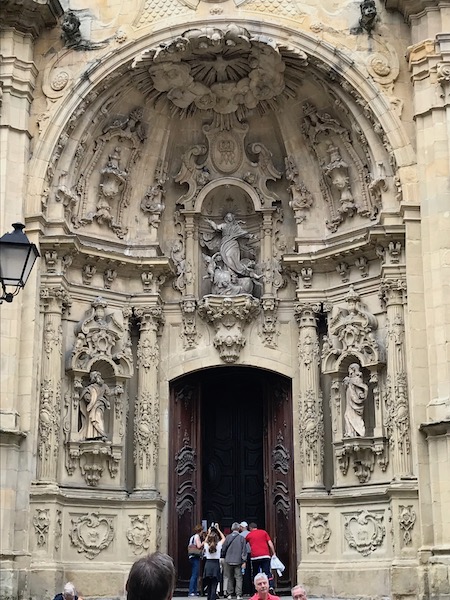
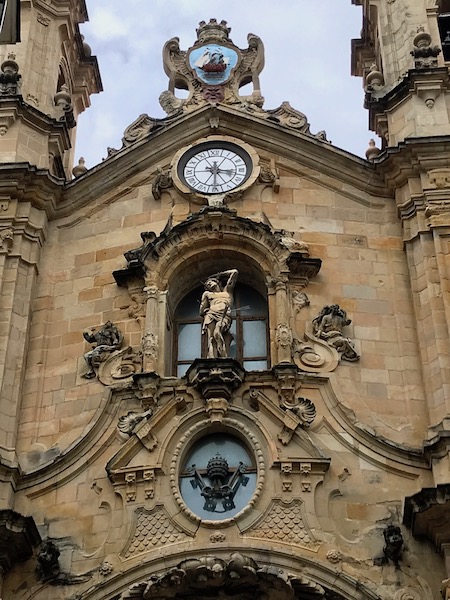
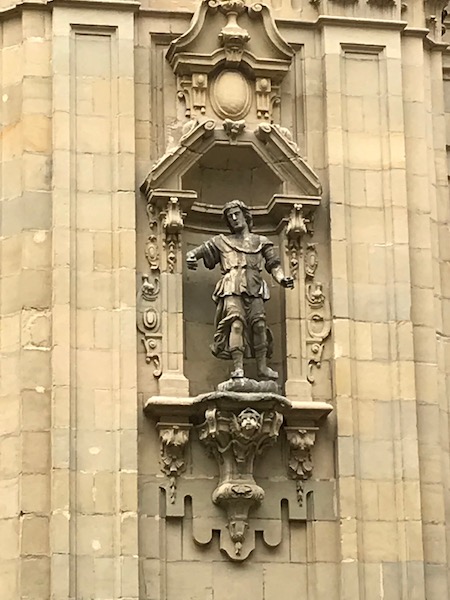
The interior is very open with high vaults. The ribs of the vault make up a flower-design, unlike many of the French Gothic churches. I thought the high altar was interesting, as the "Christ on the cross" was a painting.

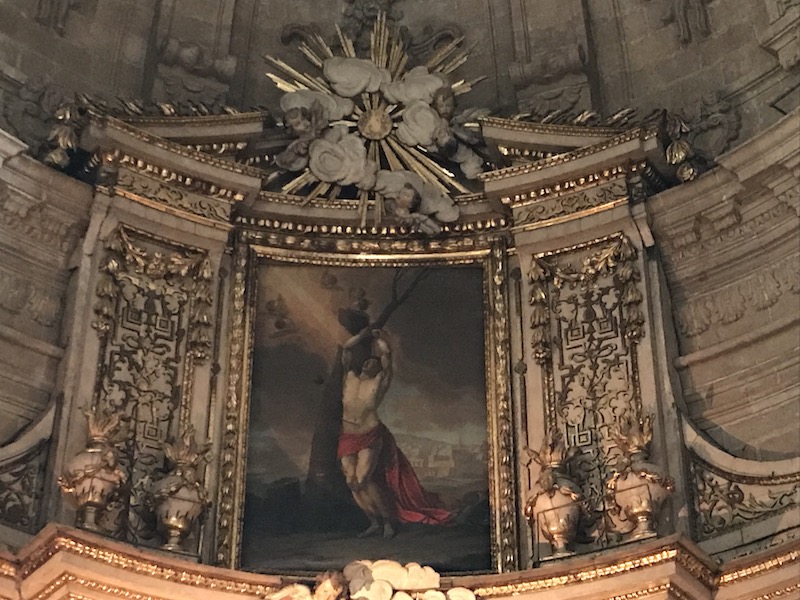
There were various chapels/altars, including the Altar of Saint Pius V. The interesting painting/sculpture here shows Christ with his feet off of the cross, since Christ has moved them to prevent Saint Pius from dying as his feet has been covered in poison.
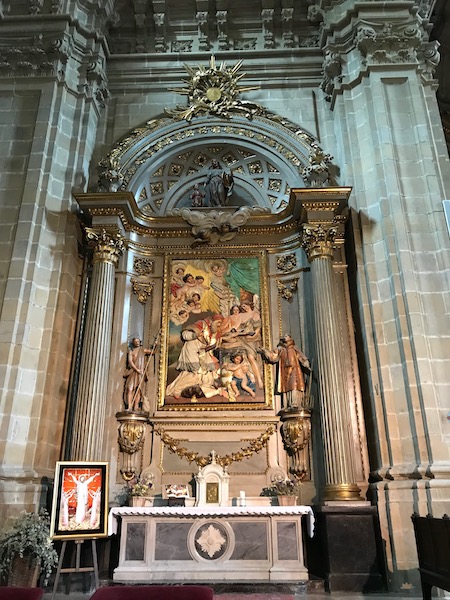

The altar of Saint Barbara also has an interesting painting/sculpture. Saint Barbara is the patron saint of the artillery (yea, who knew there was a patron saint for artillery!).
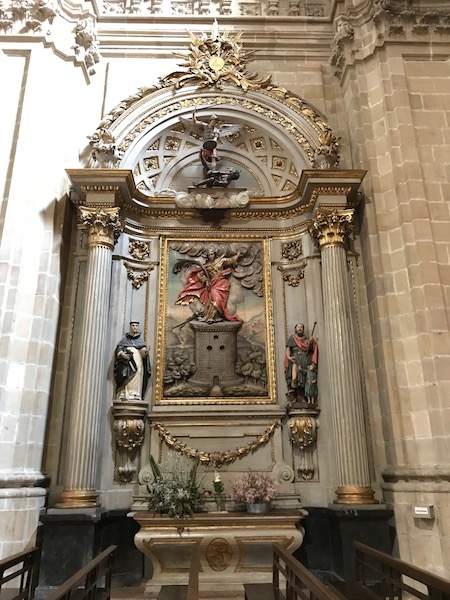
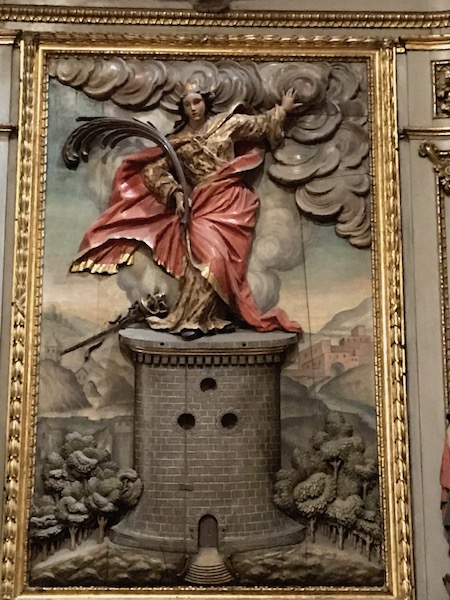
There were also several other altarpieces, specifically in Baroque design from the 18th century. This one was, in my opinion, was one of the best. In the central niche, it depicts the Holy Family.
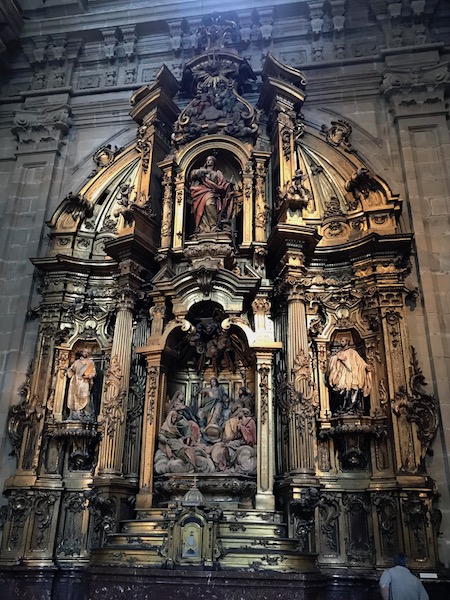
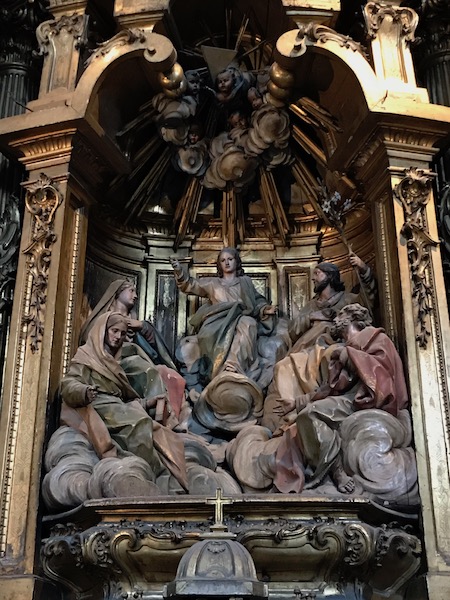
Our workout for the day came in the form of a walk up Mount Urgull. Due to its location, the area was home to a military fort in the 12th century. From this vantage point, you can get great views of the city and its beaches.
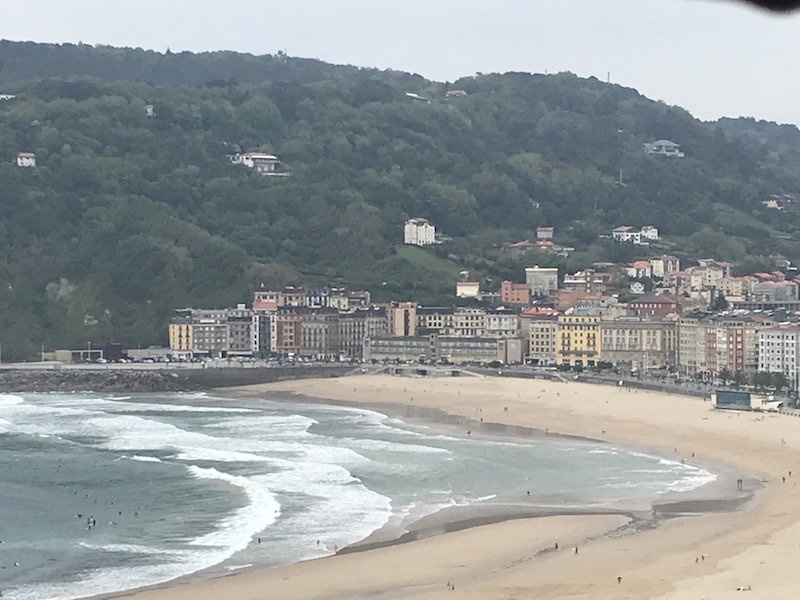

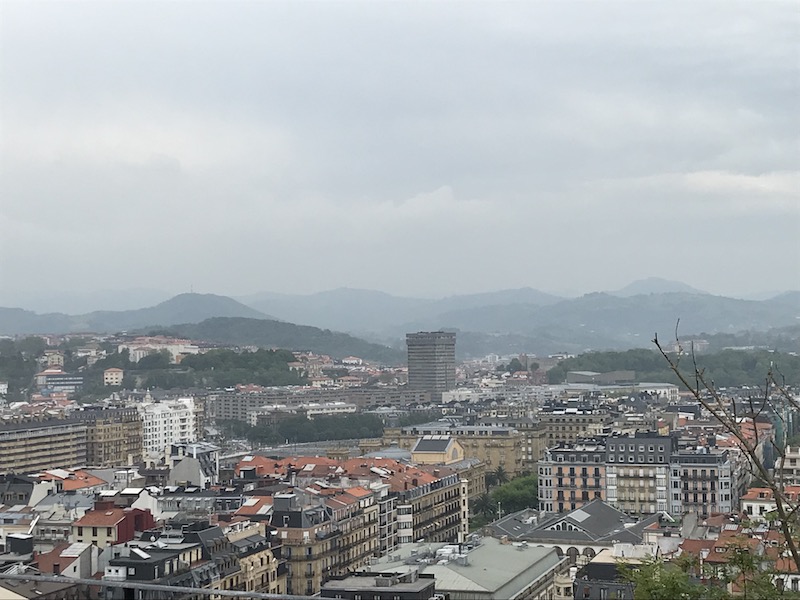
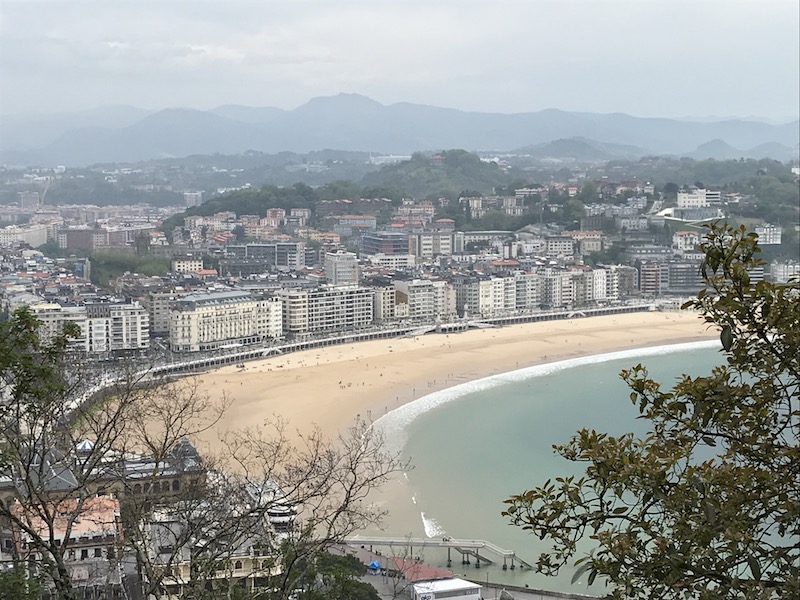
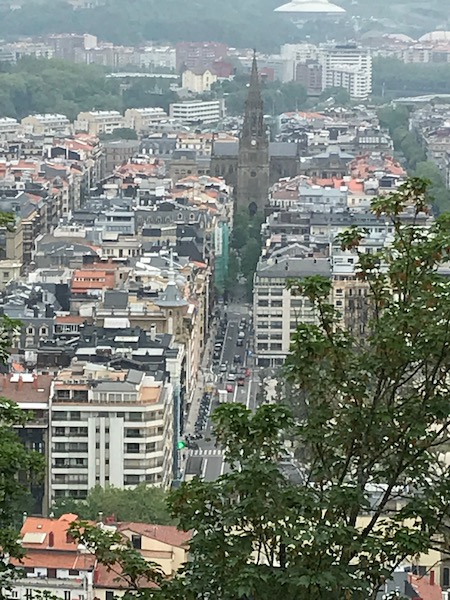

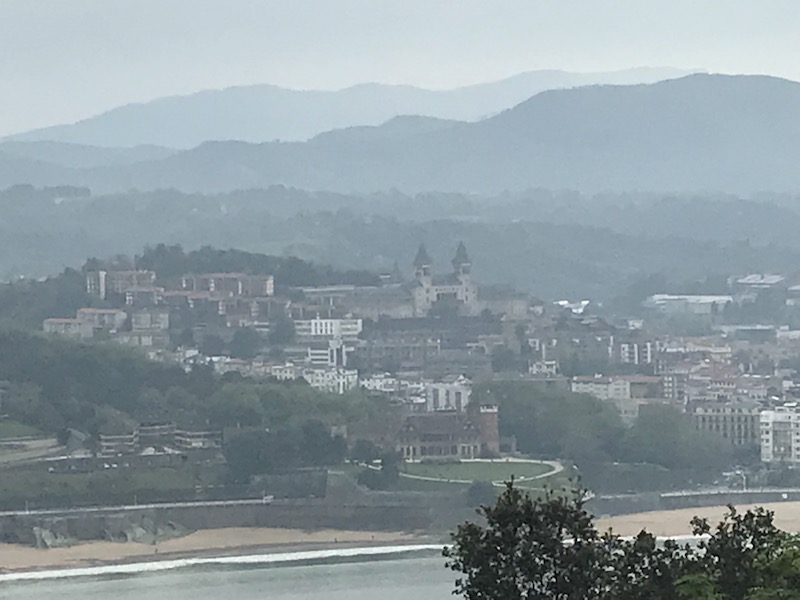
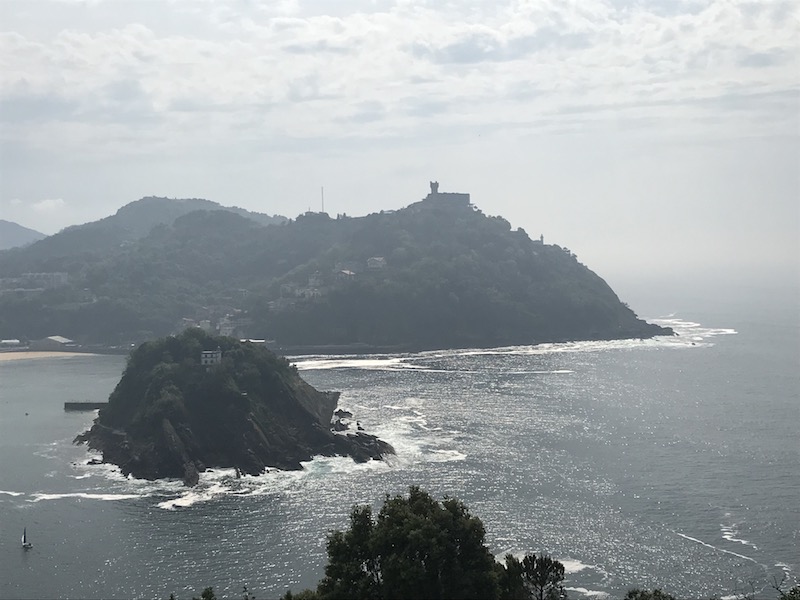
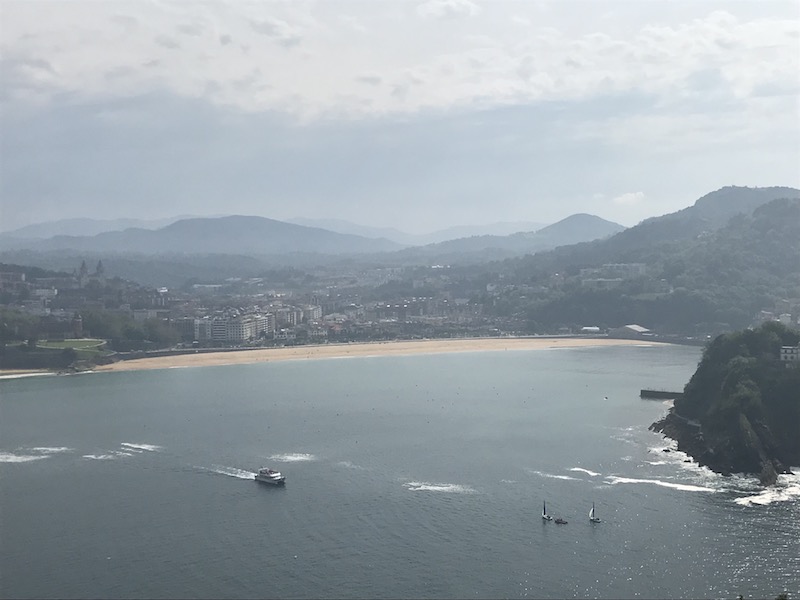
The Sagrado Corazón ('Sacred Heart') statue sits at the highest point of Monte Urgull, overlooking the city. The statue itself is almost 40 feet tall and sits on a base (another 40 feet tall or so) which houses a chapel. Installed in 1950, it is now one of the symbols of the city and can be seen from 4 miles out to sea.
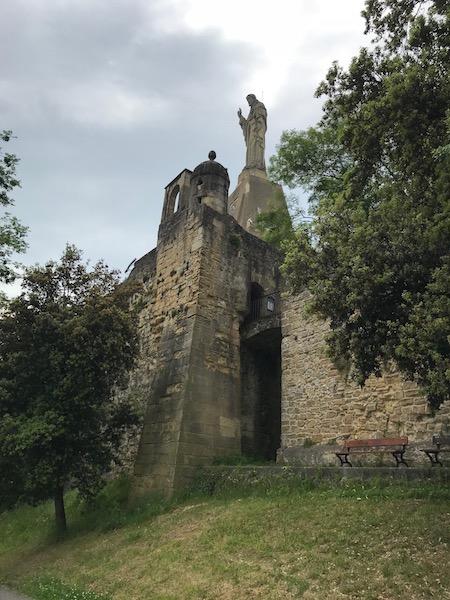

A stretch of the walls still limits the Old Part on its exit to the port through the Portaletas gate, seen here from the port-side.
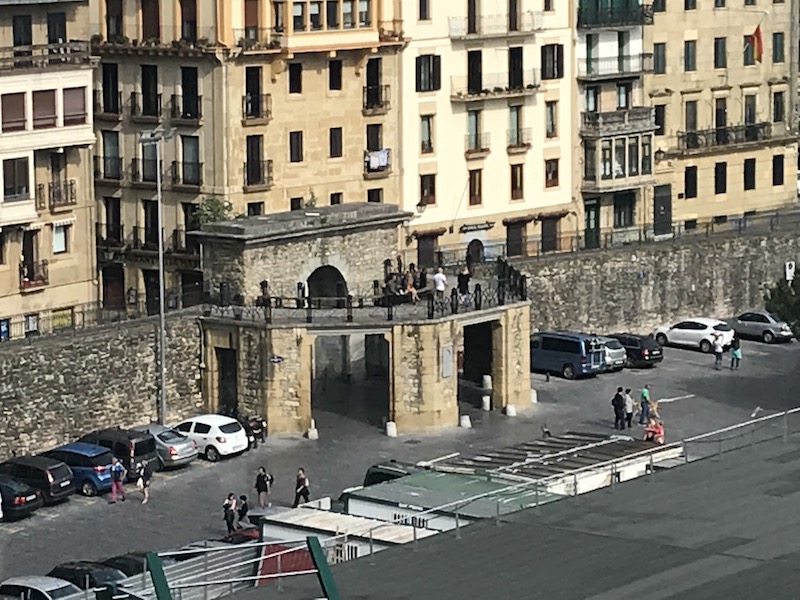
La Concha beach is probably the classic view of San Sebastián, stretching from City Hall to a place called the Parrot's Beak. The City Hall building, dating from 1887, was home to the city’s Gran Casino until it was closed in 1924 with the prohibition of gambling.The opening ceremony was attended by the Queen Maria Christina of Austria. There is a huge square and park that stretches along the beach. Along this promenade are these lovely Victorian lamp posts that are replicated in the Film Festival awards.
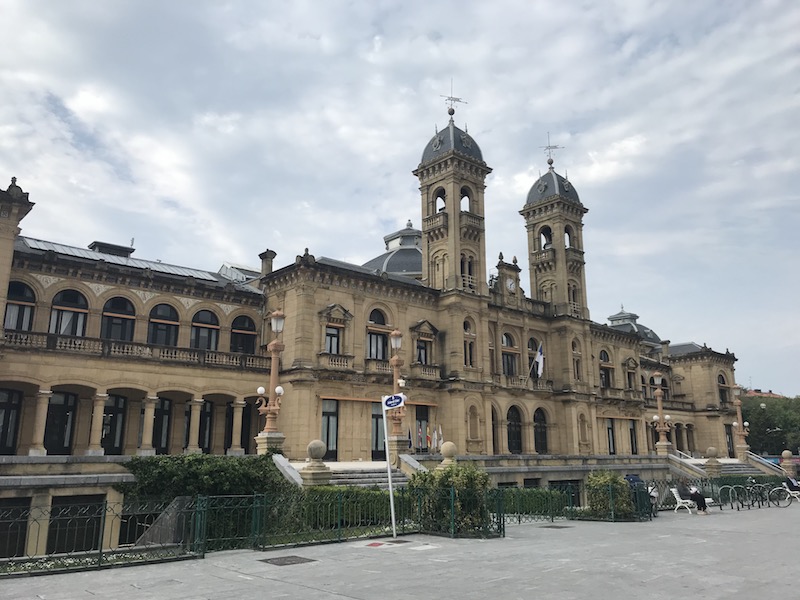
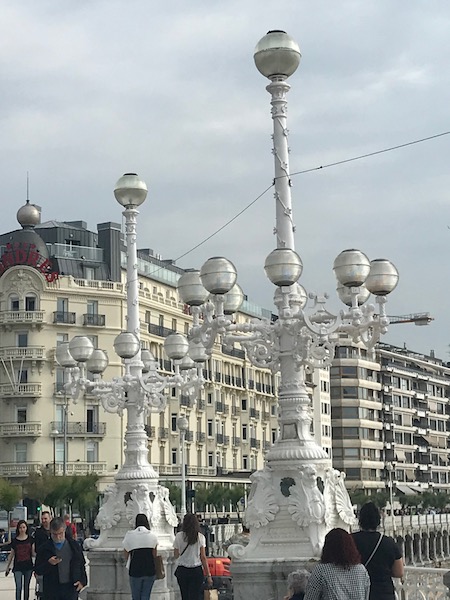
The Cathedral of the Good Shepherd was built in the late 19th century after a 1881 royal order which created a new parish in San Sebastián. After building a quick, wooden church in 1888, they undertook the creation of a large, grand cathedral. The Spanish Royal Family, who were vacationing in the city, were invited to the laying of the foundation stone in September 1888. The minutes of the foundation-stone-ceremony were signed by the baby king Alfonso XIII (at two years and four months) by his mother taking his hand. This is the first signature of Alfonso XIII on any official document. Supposedly inspired by the Cologne Cathedral, it is a Latin Cross with no ambulatory.
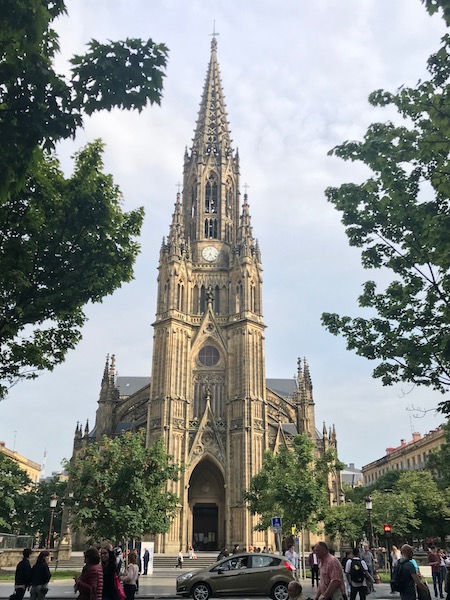
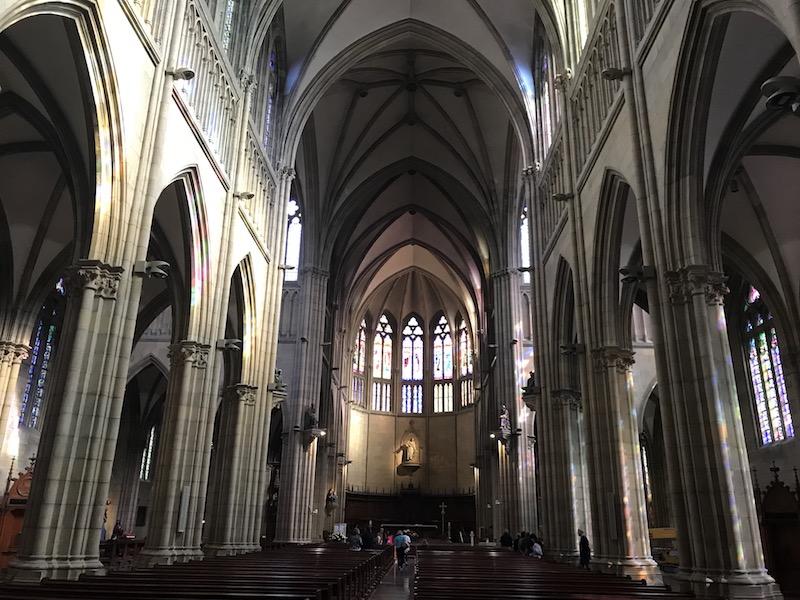
One of the reasons that I love stained-glass is when the sun comes through them, sprinkling colors on the walls of the churches. We happened to be lucky enough to catch just such a show.
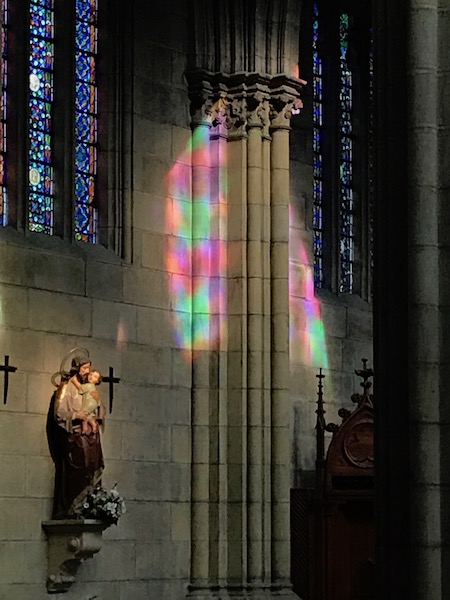

And a couple stained glass windows (although not my best pictures).
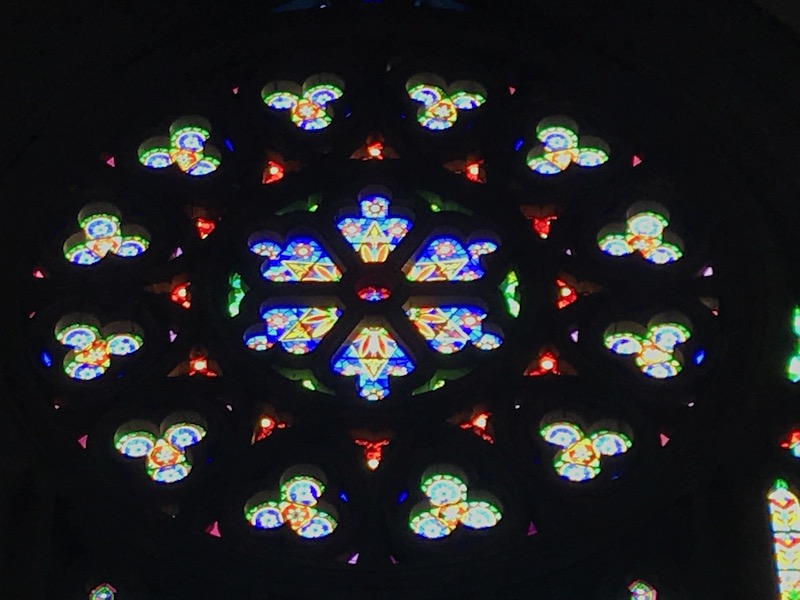
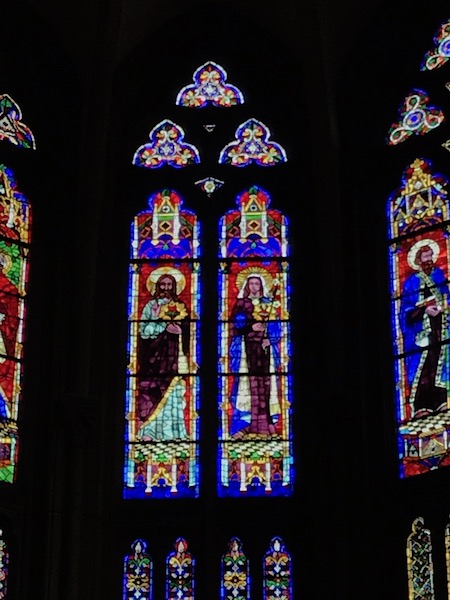
Resting on a pedestal in the apse is a the sculpture of the Good Shepherd, for whom the church is dedicated.

Tom in front of a fountain in Bilbao Plaza ... nothing really much that I know about the fountain or the square (sorry).
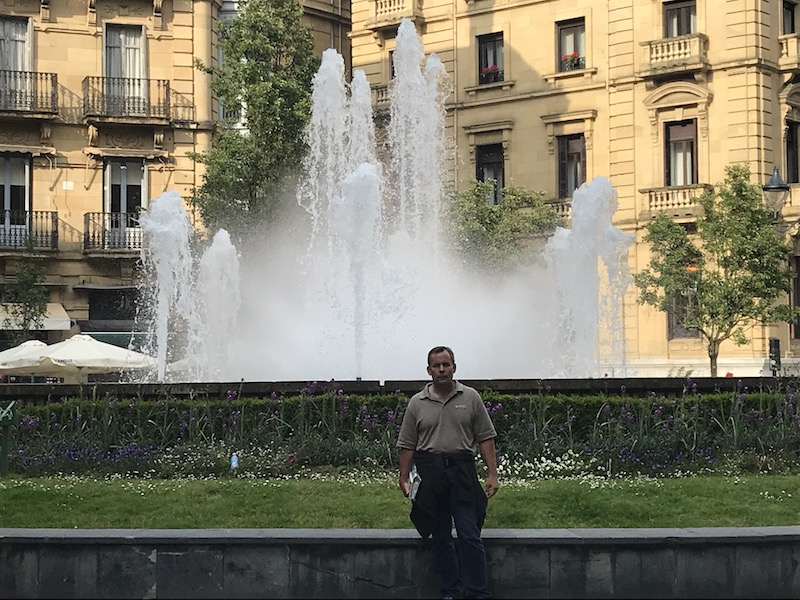
The María Cristina Bridge was opened in January 1905, replacing a wooden bridge from 1893 that provided access from the city centre to the Estación del Norte train station, the bullring and the velodrome. The bridge is highlighted by four monumental obelisks, which are copies of the Alexander III bridge in Paris. Interestingly enough, that was the first thing we noticed when we saw the bridge ... we said that it reminded us of the Alexander Bridge in Paris.

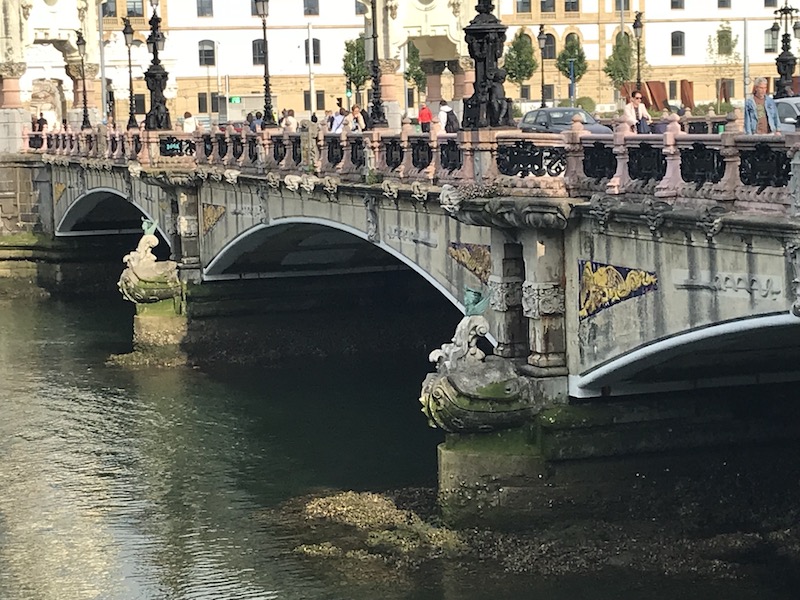
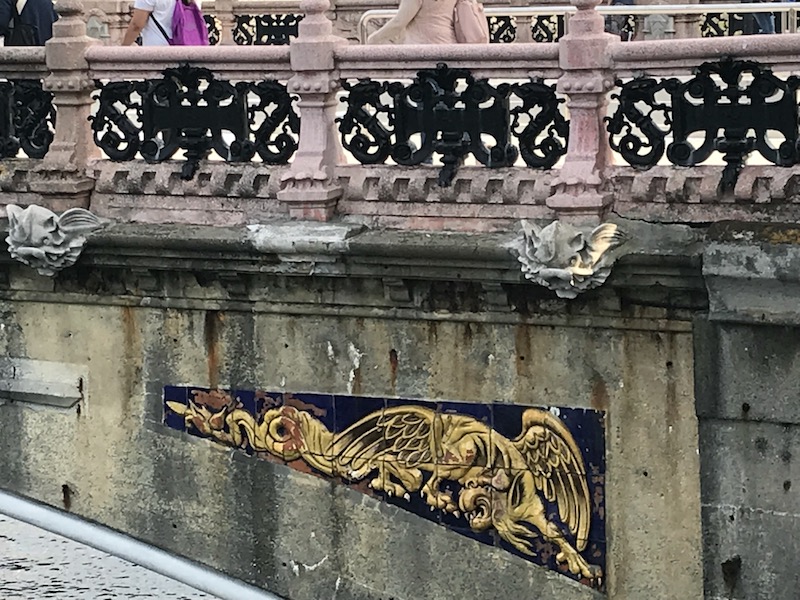
The Victor Eugenia Theater, built in a typical Belle Époque style, situated in the center of the Old Town on the banks of the Urumea river. Built in 1912, it is made of stone with decorative plateresque motifs and Spanish renaissance forms. On the façade of the building, above the Doric pillars, are four sculptural groupings representing opera, tragedy, comedy and drama. I also liked the decoration on the actual sides of the bridge, which I thought were interesting.
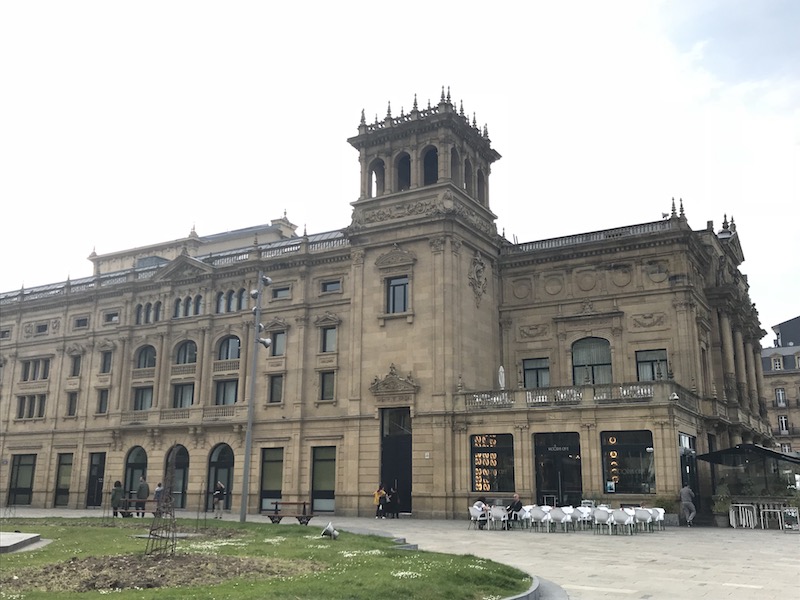
Next to the Theater, also in a Bell Epoque style, sits the Maria Cristina Hotel. It opened in July 1912, with the hotel’s namesake, Spain’s regent Maria Cristina being the first person to cross the threshold. In the late 19th century the seaside town on the southern point of the Bay of Biscay became a favorite destination for royalty and aristocrats who came to enjoy the sunshine and newly recognized therapeutic properties of sea bathing. Designed by Charles Mewes, the hotel immediately becoming the favored accommodation for international high society due to the enviable river setting, sea views, and luxury accommodations.
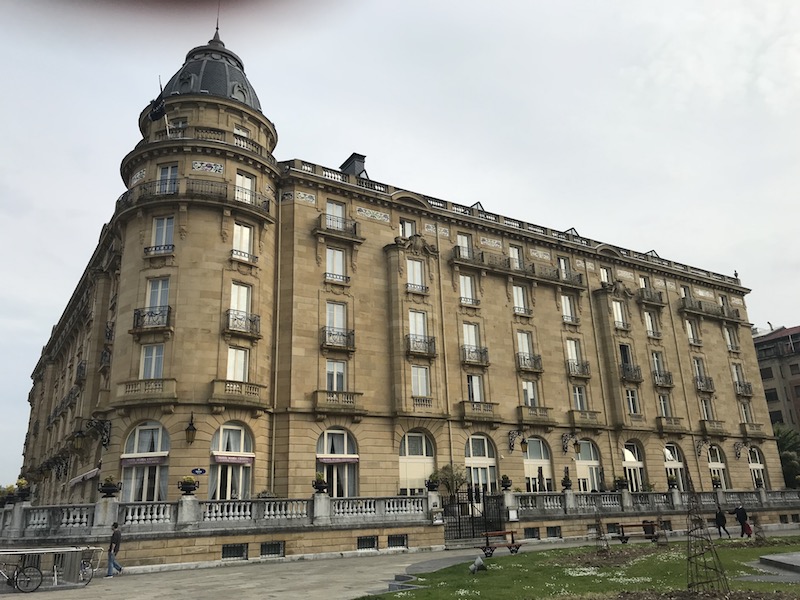
The word "pintxo" literally translates to "skewer" and traditionally refers to snack-like foods often served on top of a slice of bread with a toothpick harpooned through. The streets of the Old Town of San Sebastián are jam-packed with pintxo bars and one of the things that people do is "pintxos-bar-hopping", which is basically going from pintxos bar to pintxos bar, eating 1 pintxos and drinking 1 glass of wine. Then you go to the next one. We picked up a guide that talked about various places (with their speciality), as well as a list in our Rick Steves book .. so off we went!
As we were walking around during the day, many of the Pintxos places had already started putting them all out on their bars. Most of them had a set of pintxos (cold and warm) laid out on plates on the bar and you would order them by just pointing. If they were warm ones, most of the time they would get just warmed up via micro-wave. Some places had a menu that you could order more "involved" ones, but we stayed with just ones that were out and point-able.

We started out pretty normally ... a couple small pintxos with anchovies, one with a shrimp on top.
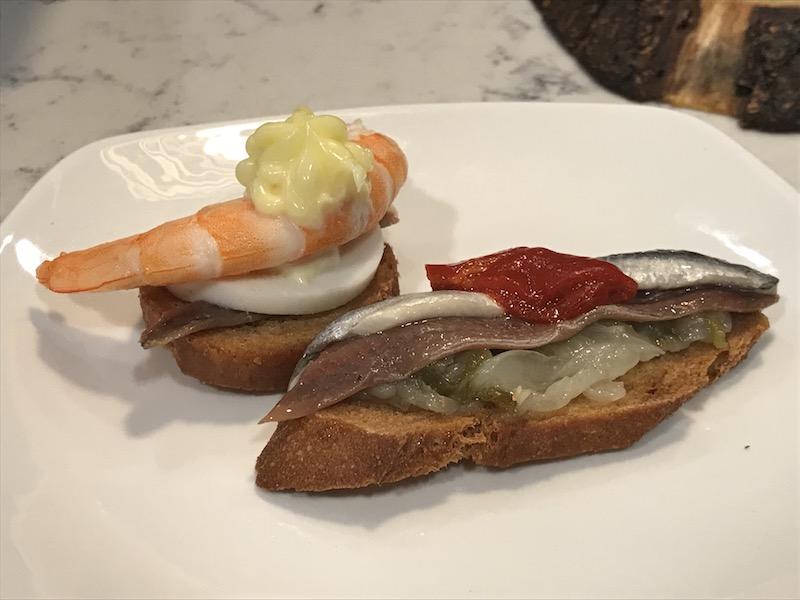
This one was a little odd ... at A Fuego Negro, we had Gordal olives stuffed with a vermouth gel. We didn't realize that they basically came in a little pack of a dozen of them.
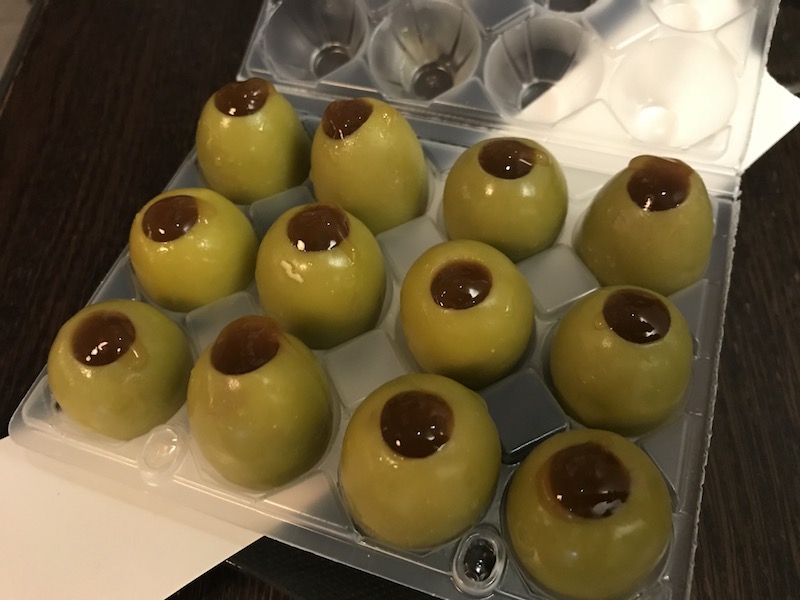
A crab tart (called Txangurro) and iberico ham on toast at Casa Gandarias.
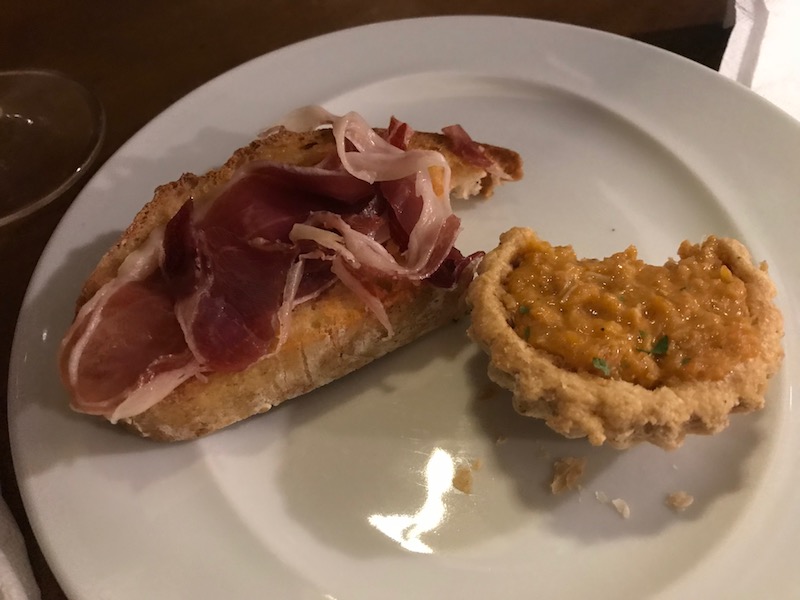
These I don't specifically know where they were from ... but we picked up some basque chorizo sausage and octopus. We ended up eating octopus several times during this trip in different places, and I must say, I am quickly becoming a fan of it.

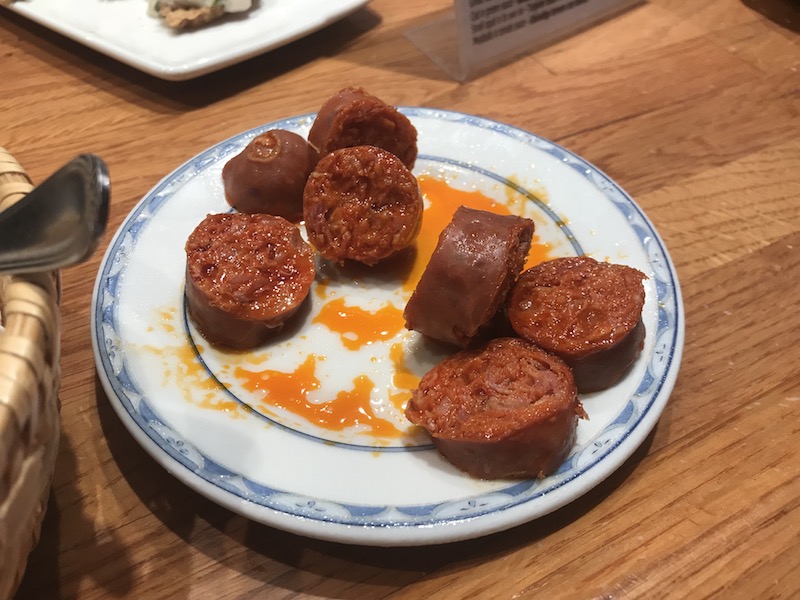
Bar Txepetxa is an anchovy place, and so of course we got 2 different ones with anchovies. Mind you, these are *NOT* your "American" anchovies that are very, very salty. This is really more like just the fresh little fish.
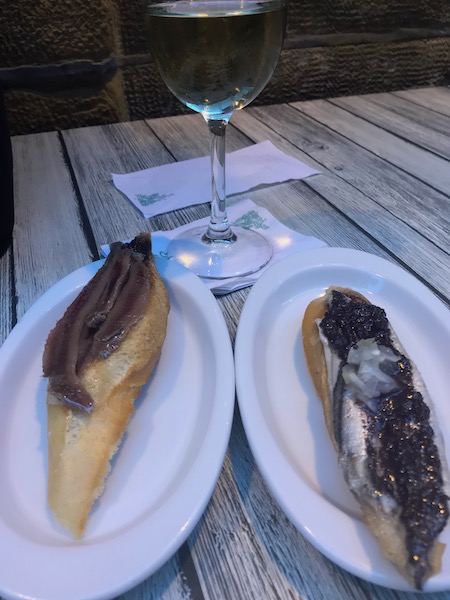
La Viña and their speciality, a cheese and anchovy cornet.

Last but not least, the veal cheeks braised in red wine at Bar Borda Berri.
